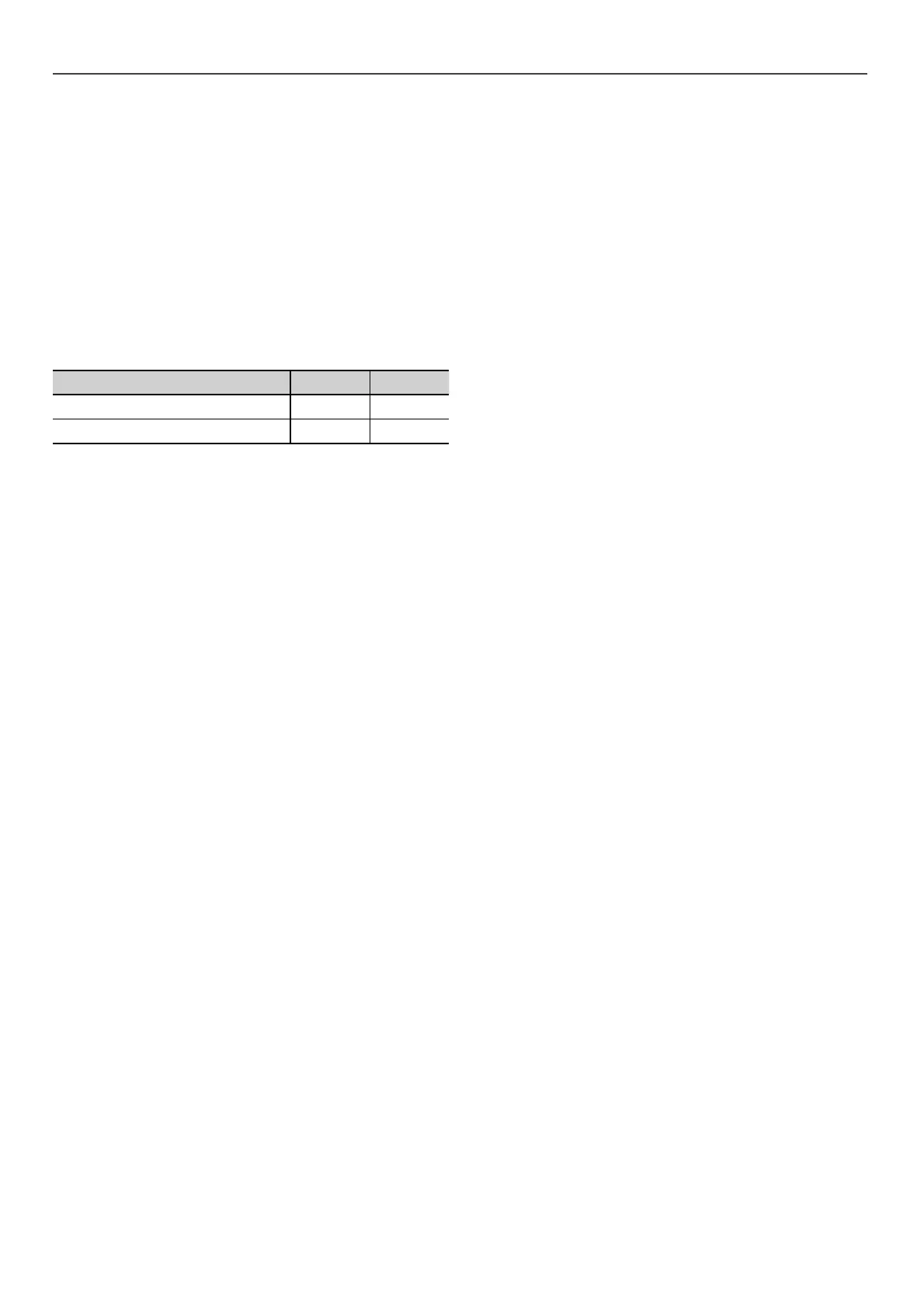4
2 - SAFETY ADVISE
2.2 - Safety standards for refrigerant
Important: These units contain a fl uorinated greenhouse gas
covered by the Kyoto protocol.
All interventions on the refrigerating circuit must be performed in
accordance with applicable legislation.
Within the European Union, it is necessary to observe regulation
(EU) No.517/2014, known as F-Gas, over Certain greenhouse
eff ect fl uoride gases.
The operator is bound by the obligation to perform periodical
sealing tests on the refrigerating circuit according to the regulation
(EU) No.517/2014.
Important: the type of refrigerant included in the unit can be
consulted on the name plate, see section 4.3.
Type of refrigerant R-410A R-454B
Global warming potential (GWP) 2.088 466
Flammability class A1 A2L
Ensure that refrigerant is never released to the atmosphere
when the equipment is installed, maintained or sent for disposal.
It is prohibited to deliberately release refrigerant into the
atmosphere. The operator must ensure that any refrigerant
recovered is recycled, regenerated or destroyed.
Always remember that refrigeration systems contain pressurised
liquids and vapours. All necessary provisions must be made
when the system is partially opened: ensure the part of the circuit
concerned is not pressurised.
Ensure good ventilation, as accumulation of refrigerant in an
enclosed space can displace oxygen and cause asphyxiation or
explosions.
Inhalation of high concentrations of vapour is harmful and may
cause heart irregularities, unconsciousness, or death. Vapour
is heavier than air and reduces the amount of oxygen available
for breathing. These products cause eye and skin irritation.
Decomposition products are hazardous.
Avoid contact with liquid refrigerant. Wash any spills from the
skin with soap and water. If liquid refrigerant enters the eyes,
immediately and abundantly fl ush the eyes with water and consult
a doctor.
The accidental releases of the refrigerant, due to small leaks
or signifi cant discharges following the rupture of a pipe or an
unexpected release from a relief valve, can cause frostbites and
burns to personnel exposed. Do not ignore such injuries. Installers,
owners and especially service engineers for these units must:
■ Seek medical attention before treating such injuries.
■ Have access to a fi rst-aid kit, especially for treating eye injuries.
Refrigerant R-410A
According to EN 378-1, R-410A belongs to the A1/A1 group, i.e.
with high safety both in the mix and also in the case of a leak.
Although it is not fl ammable, keep them away from open fl ames
(e.g. cigarettes) as temperatures of over 300°C cause their
vapours to break down and form phosgene, hydrogen fl uoride,
hydrogen chloride and other toxic compounds. These compounds
may produce severe physiological consequences if accidentally
inhaled or swallowed.
In case of a leak:
■ To detect leaks, an electronic leak detector, an ultraviolet lamp
or soapy water must be used. Flame detectors do not help.
■ If a leak occurs or if the refrigerant becomes contaminated (e.g.
by a short circuit in a motor) remove the complete charge using
an specifi c recovery unit for R-410A.
■ The refrigerant must be stored in mobile certifi ed containers.
■ Repair the leak detected and recharge the circuit with the total
refrigerant charge, as indicated on the unit name plate. Only
charge liquid refrigerant at the liquid line.
Refrigerant R-454B
According to EN 378-1, refrigerant R-454B belongs to the A2L
group, that is, non-toxic and low fl ammability, so it only requires
minimal precautions for a completely safe operation.
Always use tools qualifi ed for A2L refrigerants according to EN
378 or ISO 817.
Risk of fl ammability: with A2L refrigerant, always use an A2L
refrigerant detector when near the unit. Default potentially
fl ammable zone is 0.6 metres around the unit. See section 7.2.
Never apply an open fl ame or live steam to a refrigerant container.
Dangerous overpressure can result.
In case of combustion of refrigerant, do not clean combustion by-
products with water, the mixture is highly corrosive.
In case of a leak:
■ To detect leaks, an electronic leak detector, must be used.
■ If a leak occurs or if the refrigerant becomes contaminated
(e.g. by a short circuit in a motor) remove the complete charge
using an specifi c recovery unit for A2L fl ammable refrigerants.
■ The refrigerant must be stored in mobile certifi ed containers.
In this case a special bottle shall be used, with the top painted
in red and threaded to the left (opposite direction to R-410A).
Vacuum the recovery bottle to remove the air before fi
lling it
with fl ammable refrigerant.
■ Use a vacuum pump, dual eff ect and anti-spark based on DIN
8975.
■ Do not mix flammable refrigerants with other types of
refrigerants in a recovery bottle. Label the recovery bottle to
show that it contains a fl ammable substance.
■ Check that there are no hazardous or combustible objects
nearby and make sure that in case of fi re the extinguisher is
nearby. The fi re extinguisher must be appropriate to the system
and the refrigerant type.
■ Always check that there is no refrigerant in the cooling circuit,
rinsing with nitrogen before welding, and checking that the
nitrogen fl ows correctly.
■ Repair the leak detected and recharge the circuit with the total
refrigerant charge, as indicated on the unit name plate. Only
charge liquid refrigerant at the liquid line.

